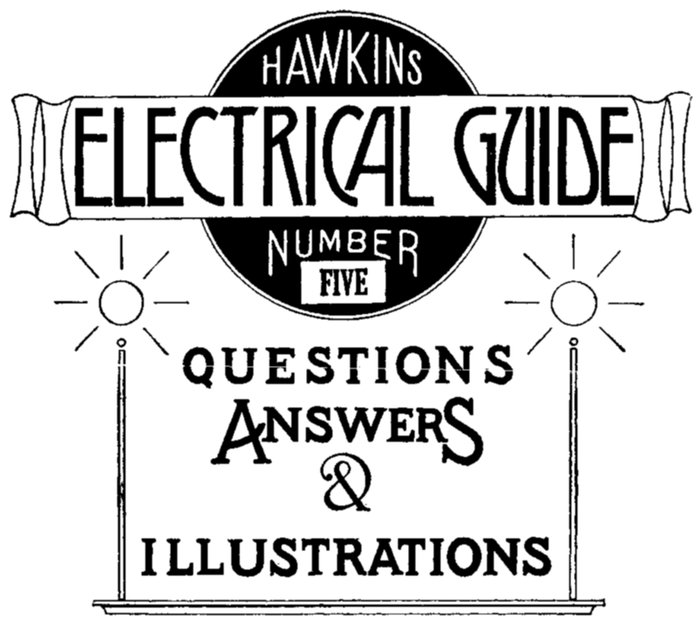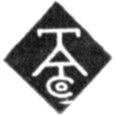The cover image was created by the transcriber and is placed in the public domain.
THE THOUGHT IS IN THE QUESTION THE INFORMATION IS IN THE ANSWER

HAWKINS
ELECTRICAL GUIDE
NUMBER
FIVE
QUESTIONS
ANSWERS
&
ILLUSTRATIONS
A PROGRESSIVE COURSE OF STUDYFOR ENGINEERS, ELECTRICIANS, STUDENTSAND THOSE DESIRING TO ACQUIRE AWORKING KNOWLEDGE OF
ELECTRICITY AND ITS APPLICATIONS
A PRACTICAL TREATISE by
by
HAWKINS AND STAFF

THEO. AUDEL & CO. 72 FIFTH AVE. NEW YORK.
COPYRIGHTED, 1914,
BYTHEO. AUDEL & CO.,
New York.
Printed in the United States.
TABLE OF CONTENTS
GUIDE NO. 5.
| ALTERNATING CURRENTS | 997 to 1,066 |
|---|---|
| The word "alternating"—advantages of alternating current—direct current apparatus; alternating current apparatus—disadvantages of alternating current—alternating current principles—the sine—application and construction of the sine curve—illustrated definitions: cycle, alternation, amplitude, period, periodicity, frequency—commercial frequencies—advantages of low frequency—phase—phase difference—phase displacement—synchronism—"in phase"—curves illustrating "in phase" and "out of phase"—illustrated definitions: in phase; in quadrature, current leading; in quadrature, current lagging; in opposition—maximum volts and amperes—average volts and amperes—elementary alternator developing one average volt—virtual volts and amperes—effective volts and amperes—relation between shape of wave and form factor—wave form—oscillograph wave form records—what determines wave form—effect of one coil per phase per pole—single phase current; hydraulic analogy—two phase current; hydraulic analogy—two phase current distribution—three phase current; hydraulic analogy; distribution—inductance—the henry—inductive and non-inductive coils—hydraulic analogy of inductance—inductance coil calculations—ohmic value of inductance—capacity: hydraulic analogy—the farad—specific inductive ... BU KİTABI OKUMAK İÇİN ÜYE OLUN VEYA GİRİŞ YAPIN!Sitemize Üyelik ÜCRETSİZDİR! | |